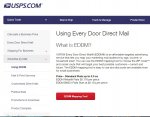Rugger7....there has been alot of good points made here, but you specifically asked about the equipment and not our opinions on whether or not you should start a business or outsource. Outsourcing is good for starters, but you don't have control over quality or turn-around time. Also, some trade printers sell direct and aren't always so honest, and might go get your customer directly.
I've worked in commercial print shops for roughly 16 years that had both digital and offset. I'm now in the business of selling digital printers, but I will try to offer an unbiased opinion since I'm most likely not going to be selling directly to you anyway unless you happen to be in the Inland Empire...
If you go the offset route you will need the press, a cutter, a UV coater, and an inkjet machine if you need addressing. If the press isn't a DI press that images the plates directly on the press, you will also need a platemaker. The offset route is best for very long runs, but you do have to consider the cost of plates, press blankets, washup chemicals, inks, rags, etc. Also, you'll need to have a skilled pressman who can demand $25-30/hr. With offset, you also have to worry about a rag service, a service for disposing of your inks/chemicals, and making sure you are adhering to environmental standards. Offset is also a multi-step process since you have to address separately (whereas digital can print and address at the same time). You also have to consider drying time before you can cut unless you get a 5th station to apply a varnish. You also have alot more paper waste for setup on an offset press to get the colors in register and up to the proper density...anywhere from 100-500 sheets per run, especially since most runs will be two sided. That also requires two passes through the press, whereas digital comes out printed both sides and addressed.
If you go the digital route, you would want a production level machine like the ones previously mentioned from the big players like Konica Minolta, Xerox, and Canon. With this route, you have a lower cost for short run than offset since you don't have to pay for all of the previously mentioned things. However, at a certain point, the clicks will outweigh the offset press costs for higher volumes. A good number to use is 4¢-5¢ per click. A click would be what you're charged for every sheet that goes through the printer, and it's charged per side. So if it's two sided, you would pay two clicks (one for each side). Most presses are running 13x19 sheets max, so you can fit four 6x9 postcards up on a page, which would be 2.5¢ per piece if you had 5¢ clicks. If you commit to a high volume or do some negotiating, most vendors will lower your click rate. The click covers all of the service on the machine, along with all consumables like toner, waste bottles, etc. You should consider a workflow system with automated imposition and hot folder capabilities. Fiery has become a good standard for the industry. With a digital press, you don't really need a highly paid craftsman like you do for offset. Just someone who pays attention to detail and is computer savvy. While an offset press usually lasts for decades, a digital press usually lasts for 5-7 years depending on usage. So these devices are typically leased so they can be traded in for a new one at the end. So the lease is another fixed cost to consider with digital. The foot print of a digital machine is typically smaller than a 4 color offset press.
For a UV coater, make sure you verify that the coatings work with the toner of the digital press you decide to go with. If not, the UV coating will bead off and not provide a smooth finish. I sell Konica Minolta's and we partner with TEC Lighting who make a coating that works great with our systems.
For cutting, you can look at a guillotine cutter or a slitter/cutter. For what you're doing, I think guillotine would be the fastest, especially if you get a programmable unit and make sure it's hydraulic instead of electrical. Slitter/cutters are great for shorter runs since you can just load the paper and walk away while the unit feeds each sheet and cuts/slits one sheet at a time. Duplo makes great products for either option. Most of the major digital vendors also sell the Duplo's.









